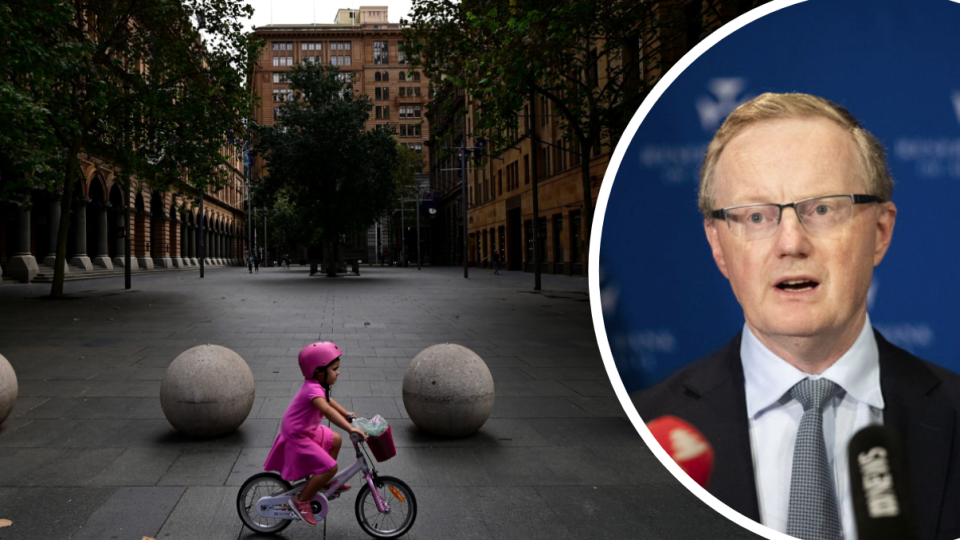Economic carnage will be felt for ‘next couple of years’: RBA

Australia is undoubtedly gearing up for a recession – and while some were initially predicting the downturn would be short and sharp, the Reserve Bank governor Philip Lowe has indicated that the economic aftershocks will be felt for years to come.
In a speech on Tuesday, Lowe said the Australian economy was set for a “difficult” few months ahead and buckling under the weight of business shutdowns as well as consumers unwilling to spend.
“The result of both the restrictions and the uncertainty is that over the first half of 2020 we are likely to experience the biggest contraction in national output and income that we have witnessed since the 1930s,” Lowe said.
Also read: 1 in 5 Aussies could lose jobs in ‘worst economic downturn in history’
Also read: ‘Destructive’: This government move could make Australia’s recession even worse
Also read: Coronavirus wreaks havoc on Aussie jobs, decimates industries
While it would be difficult to put “precise” numbers to the economic contraction, the RBA estimates GDP will drop by 10 per cent in the first half of 2020 and unemployment is set to hit 10 per cent in June.
“These are all very large numbers and ones that were inconceivable just a few months ago. They speak to the immense challenge faced by our society to contain the virus,” he said.
Lowe has not been the first to remark that Australia’s economic situation hasn’t been this grave since the Great Depression.
A recent report by the Grattan Institute said the nation was facing the ‘worst economic downturn in history’, warning that one-in-five jobs would be gone due to the shutdown.
Optimistic modelling reveals that Australia’s unemployment rate would still reach 9.8 per cent, a figure – in line with the RBA’s estimates – that has not been seen for nearly three decades.
Fresh figures from the ABS on Monday found that the percentage of Australians working paid hours fell from 64 per cent to 56 per cent, and more than a quarter were working fewer hours.
While Lowe acknowledged “a bridge has been built to get us to the other side” and said we could be “confident that our economy will bounce back and that we will see it recover,” he also revealed he expected Covid-19 to have a long-term impact.
“It is likely that the unemployment rate will remain above 6 per cent over the next couple of years,” he said.
Even if Australia recovers relatively quickly, the nation will be feeling the brunt of the virus for some time yet.
“Whatever the timing of the recovery, when it does come, we should not be expecting that we will return quickly to business as usual,” Lowe said.
“Rather, the twin health and economic emergencies that we are experiencing now will cast a shadow over our economy for some time to come.”
The “severe shocks” will alter mindsets of people and businesses, and some businesses that shut because of the virus won’t reopen.
“There will also be a higher level of debt and some households might reevaluate the risks of having highly leveraged balance sheets. It is also probable that there will be structural changes in the economy,” said the RBA governor.
“We are all learning to work, shop and travel differently. Some of these changes will probably stay with us, requiring a rethinking of business models. So the crisis will have reverberations through our economy for some time to come.”
On the other side
Getting through this would mean increasing the country’s “growth and productivity agenda”, Lowe said.
“As we look forward to the recovery, there is an opportunity to build on the cooperative spirit that is now serving us so well to push forward with reforms that would move us out of the shadows cast by the crisis.
“A strong focus on making Australia a great place for businesses to expand, invest, innovate and hire people is the best way of extending the recovery into a new period of strong and sustainable growth and rising living standards for all Australians.”
Grattan’s report found that pulling the country out of a “long and deep recession” could also mean even more economic stimulus after the Covid-19 crisis is over, on top of the three stimulus packages already announced.
A new report by KPMG commissioned by the CSIRO found that investing in the circular economy, that is making certain aspects of the economy more efficient and productive, could save the country $210 billion in GDP and create 17,000 jobs by 2047.
Australia’s longest-serving treasurer Peter Costello as well as the current treasurer Josh Frydenberg have both advocated for the importance of productivity to the national agenda.
Make your money work with Yahoo Finance’s daily newsletter. Sign up here and stay on top of the latest money, news and tech news.
Follow Yahoo Finance Australia on Facebook, Twitter, Instagram and LinkedIn.

 Yahoo Finance
Yahoo Finance 
